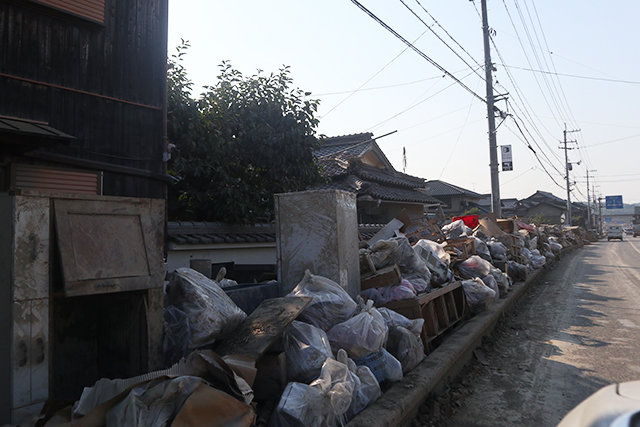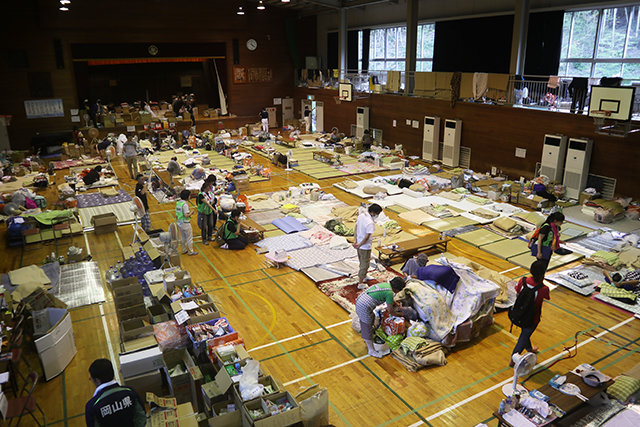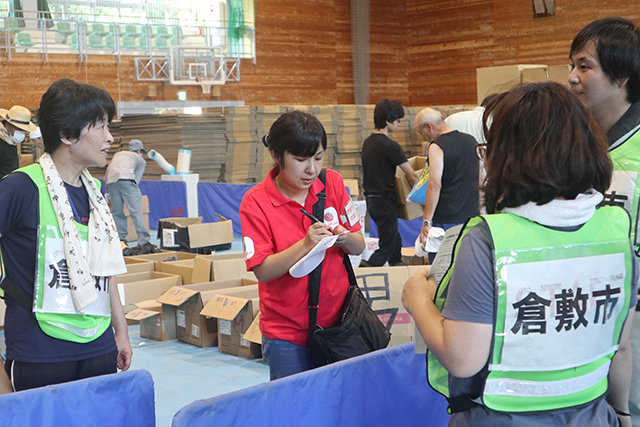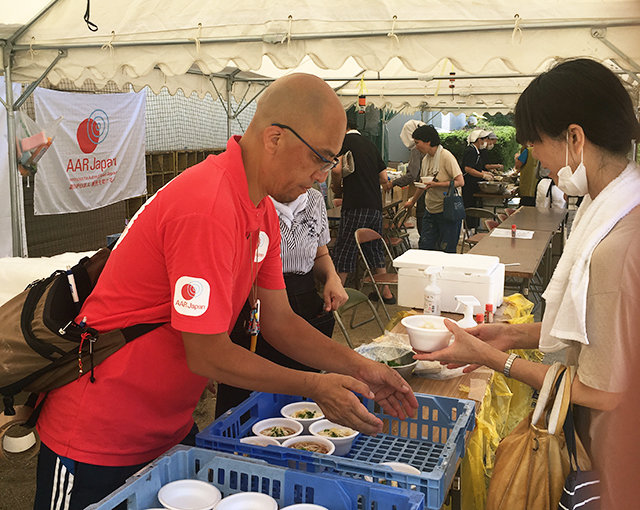By AAR Emergency Resque Team | AAR Emergency Resque Team
More than a week has passed since the flood and landslide hit western Japan. The midsummer heat has continued since the heavy rain stopped, and on July 14, it recorded a maximum temperature of 36 degrees Celsius. There are still about 2,890 people living in evacuation centers in Okayama prefecture, where 16,430 houses are without running of water, roads and railways still not fully restored (according to the announcement of Okayama prefecture on 15th July). The hard days continue for those affected.
Browned city, smell of sludge
The landscape of lush greenery on the way from Kurashiki station to Mabi-cho district changes drastically after crossing the bridge over the tributary of Takahashi River. Roads, grass fields, signs, and walls of houses. Everything is browned with mud, such as. The traffic lights are not completely recovered, and in some places, the police officers were handling the traffic with hand signals. Muddy rubble, brought out of the houses, was piled neatly on both sides of the road. When we opened the car window, there was smell of sludge. According to the neighbors, the smell seems getting worse day by day as the heat gets tenser.
More comfort for the evacuees
Living conditions of evacuation centers are gradually improving. To prevent people from disuse syndrome, physical therapists of the Japan Disaster Rehabilitation Assistance Team (JRAT) started exercises regularly at Niman Elementary School Evacuation Center in Kurashiki-City. Air conditioners were installed not only in the gymnastic hall, but also in the classrooms used for evacuees who are in need of nursing care. As for the laundry, people had been forced to wash by hands, but now it became much easier as three washing machines were brought in.
However, there are many people, who go out during daytime to chek on their houses, and come back utterly discouraged after seeing only a heap of debris. Many volunteers, gathering from all over Japan during the consecutive holidays, will be of much help for the elderly who fell already exhausted to clean their houses.
Various relief supplies have arrived in the afflicted areas, but there are still things that are in urgent need. AAR will continue to deliver soup kitchens and distribute items that are wanted in shelters and welfare centers, while listening to the voices of evacuees.
Please donate and help us support the people of western Japan.
Project reports on GlobalGiving are posted directly to globalgiving.org by Project Leaders as they are completed, generally every 3-4 months. To protect the integrity of these documents, GlobalGiving does not alter them; therefore you may find some language or formatting issues.
If you donate to this project or have donated to this project, you can receive an email when this project posts a report. You can also subscribe for reports without donating.



